Fermenting Beer with Fermentis SafAle BE-256 Yeast
Published: August 1, 2025 at 9:37:03 AM UTC
Last updated: November 30, 2025 at 8:02:06 PM UTC
Brewing Belgian strong ales demands a yeast that can handle their complexity and strength. Fermentis SafAle BE-256 yeast is a high-performance, fast-fermenting option. It's well-suited for this task. This yeast strain is renowned for producing high levels of isoamyl acetate and fruity esters. These are key characteristics of Belgian ales like Abbaye, Dubbel, Tripel, and Quadrupel. Using SafAle BE-256, brewers can achieve a robust fermentation. This results in a rich, complex flavor profile.
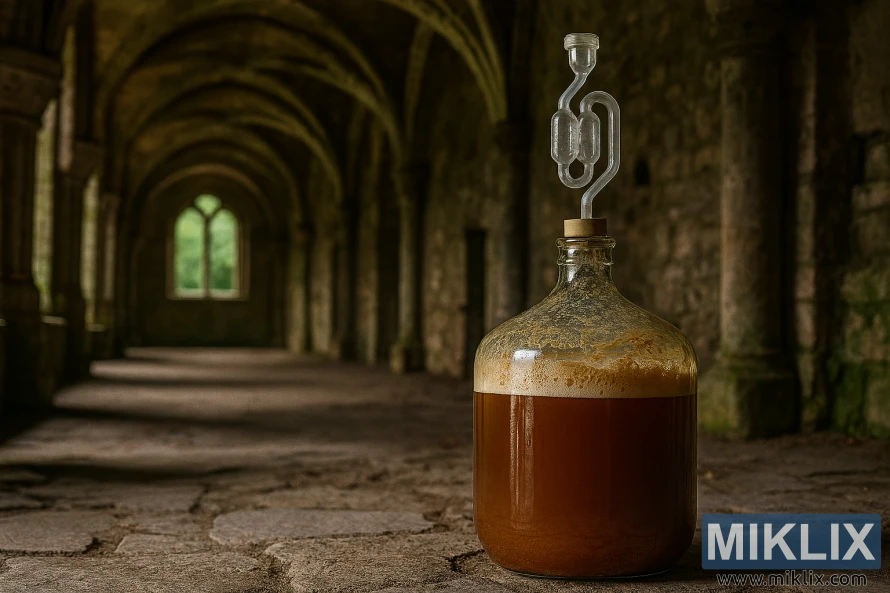
Key Takeaways
- High-performance yeast for Belgian strong ales.
- Produces fruity esters and isoamyl acetate.
- Suitable for brewing Abbaye, Dubbel, Tripel, and Quadrupel.
- Fast-fermenting for efficient brewing.
- Results in complex flavor profiles.
Understanding Fermentis SafAle BE-256
SafAle BE-256 comes from a Belgian yeast bank, crafted for brewers aiming at authentic Belgian ales. It's celebrated for its complex, fruity flavors and high alcohol content. These traits are highly sought after in Belgian beer styles.
The selection of SafAle BE-256 was thorough, focusing on yeast with the right fermentation traits. This makes it perfect for brewing a range of beer styles, from Belgian ales to complex, full-bodied ones.
Using Fermentis SafAle BE-256 offers brewers a reliable fermentation process. They can look forward to a clean fermentation with minimal off-flavors. This allows the beer's natural characteristics to stand out.
SafAle BE-256 is a top pick for brewers wanting beers with deep, complex flavors. Its flexibility in fermentation temperatures and alcohol tolerance make it suitable for diverse brewing needs.
- Produces complex, fruity flavors
- High alcohol content capability
- Consistent and reliable fermentation performance
- Versatile for various brewing applications
Technical Specifications and Performance Metrics
Grasping the technical details of Fermentis SafAle BE-256 is key for top-notch brewing. This yeast is celebrated for crafting complex, balanced Belgian-style ales. To unlock its full capabilities, brewers need to understand its technical specs and performance metrics.
The dosage of Fermentis SafAle BE-256 yeast is a critical parameter that influences fermentation outcomes. The recommended pitching rate is typically between 1 to 2 grams per liter of wort, depending on the specific gravity and volume of the brew. Proper dosage ensures that the yeast can effectively ferment the wort without over-stressing, which can lead to off-flavors.
Temperature is another vital factor that affects the performance of Fermentis SafAle BE-256. This yeast strain is capable of fermenting at temperatures between 65°F to 75°F (18°C to 24°C), making it versatile for various brewing setups. Optimal fermentation temperatures are generally considered to be between 68°F to 72°F (20°C to 22°C), where the yeast can produce a balanced profile of esters and other flavor compounds.
The fermentation kinetics of Fermentis SafAle BE-256 are characterized by its ability to attenuate wort sugars efficiently. This yeast strain is known for its high attenuation levels, typically ranging from 73% to 77%, which contributes to the dry finish and complex flavor profile of the beer. The fermentation process is generally vigorous, with visible signs of activity within 24 to 48 hours after pitching.
- Recommended dosage: 1-2 grams/liter
- Temperature range: 65°F to 75°F (18°C to 24°C)
- Optimal fermentation temperature: 68°F to 72°F (20°C to 22°C)
- Attenuation level: 73% to 77%
Optimal Fermentation Parameters
Optimal fermentation conditions are essential for Fermentis SafAle BE-256 yeast to shine. The fruity flavors it produces depend on the initial wort concentration and fermentation temperature. These factors are critical.
Temperature control is vital when brewing with Fermentis SafAle BE-256. The yeast's performance and flavor profile are greatly affected by temperature. Both homebrewers and commercial brewers must focus on maintaining the right temperature range.
The initial wort concentration also impacts fermentation outcomes. A higher concentration can enhance fruity flavors, a key characteristic of beers made with this yeast. Yet, finding the right balance is necessary to prevent over-attenuation or other issues.
To get the best results, brewers should consider these key parameters:
- Keep the fermentation temperature consistent within the recommended range for Fermentis SafAle BE-256.
- Check the initial wort concentration to match the desired beer style and flavor.
- Invest in quality beer brewing supplies for accurate temperature control and clean fermentation vessels.
By carefully managing these parameters, brewers can fully exploit Fermentis SafAle BE-256 yeast. This leads to complex and flavorful beers that meet their goals. Whether you're an experienced brewer or new to homebrewing, understanding and controlling these factors is essential for success with this versatile yeast.
Flavor Profile and Characteristics
The Fermentis SafAle BE-256 yeast is celebrated for its ability to elevate beer flavors with its unique fruity and floral notes. It excels in creating complex, intense aromas. This makes it a top pick for brewers aiming to craft distinctive, full-bodied beers.
According to brewing data, SafAle BE-256 offers fruity flavors across different fermentation conditions. This is most evident at higher densities and high fermentation temperatures. This versatility empowers brewers to explore various beer styles while ensuring a consistent flavor profile.
Beers brewed with SafAle BE-256 boast a rich, complex flavor profile. They are marked by pronounced fruity and floral notes. This makes the yeast an excellent choice for brewing Belgian-style ales and other complex beer styles.
- Produces fruity and floral flavors
- Thrives under various fermentation conditions
- Ideal for brewing complex, full-bodied beers
By utilizing Fermentis SafAle BE-256 yeast, brewers can create beers that truly stand out. These beers cater to the increasing demand for craft beers with unique flavors and aromas.
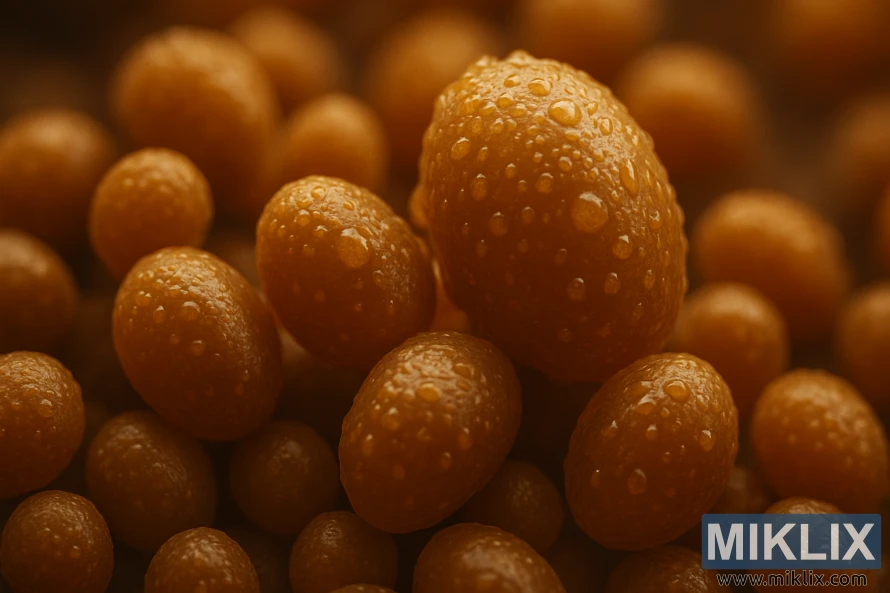
Brewing Applications and Best Practices
The Fermentis SafAle BE-256 yeast strain is celebrated for its role in enriching the flavor of diverse beer styles. It excels in brewing complex, full-bodied beers, such as Belgian strong ales, Imperial porters, and stouts. This yeast is ideal for beers that demand a rich, fruity taste.
Understanding the capabilities and limitations of Fermentis SafAle BE-256 is key to optimizing the brewing process. It's well-suited for brewing a range of beer styles, including Belgian strong ales, American strong ales, and Imperial porters and stouts.
To achieve the best results, brewers must focus on maintaining optimal fermentation parameters. This includes temperature and pitching rates. Best practices include proper yeast handling and storage, as well as monitoring fermentation conditions.
- Monitor fermentation temperatures to ensure optimal performance.
- Pitch the correct amount of yeast to achieve the desired attenuation.
- Store yeast properly to maintain viability.
By adhering to these guidelines and grasping the brewing applications of Fermentis SafAle BE-256 yeast, brewers can unlock the full flavor of their beer brewing supplies. This leads to the creation of exceptional Belgian ales and other complex beer styles.
Attenuation and Alcohol Tolerance
Understanding the attenuation and alcohol tolerance of Fermentis SafAle BE-256 is key to achieving desired fermentation outcomes. Attenuation is the yeast's ability to convert sugars into alcohol and carbon dioxide. A yeast with high attenuation results in a drier beer, while lower attenuation leads to a sweeter one.
The Fermentis SafAle BE-256 yeast is renowned for its high attenuation, ranging between 73% to 77%. This means it efficiently ferments a large portion of the wort's sugars. As a result, it produces beers with balanced alcohol content and a dry finish.
In terms of alcohol tolerance, Fermentis SafAle BE-256 yeast has a high capacity for alcohol production. It's ideal for brewing beer styles that require higher alcohol content. The yeast can tolerate alcohol levels up to 11-12% ABV, though it performs best at lower to moderate levels.
Key characteristics of Fermentis SafAle BE-256 yeast include:
- High attenuation rate (73-77%)
- High alcohol tolerance (up to 11-12% ABV)
- Ability to ferment at a wide range of temperatures
- Production of complex flavor profiles
For both homebrewers and commercial brewers, understanding these characteristics is vital. By leveraging Fermentis SafAle BE-256 yeast's attenuation and alcohol tolerance, brewers can craft a wide variety of beer styles. This includes traditional Belgian ales and modern craft beers.
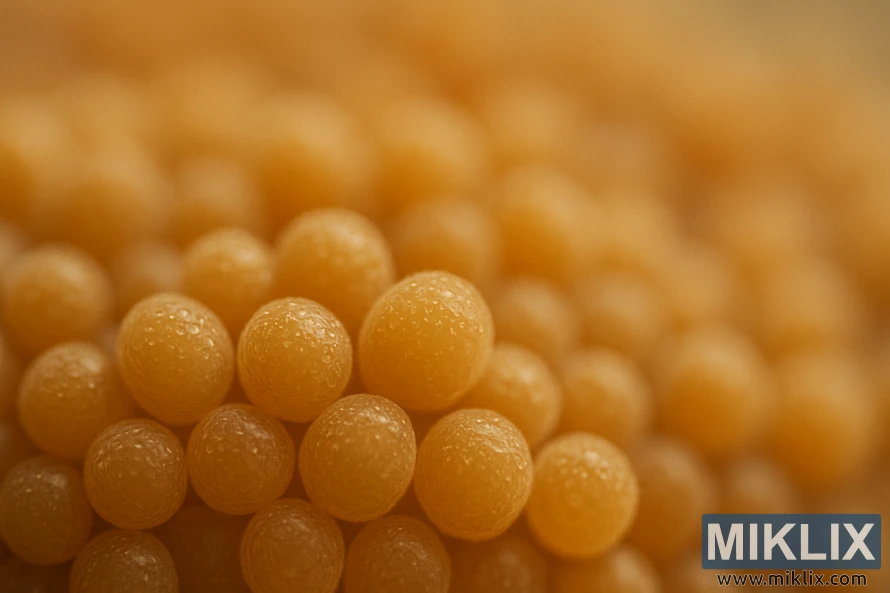
Flocculation Characteristics
Understanding the flocculation behavior of SafAle BE-256 is key for brewers aiming at optimal beer quality. Flocculation is the process where yeast cells clump and settle at the bottom of the fermentation vessel. This affects the beer's clarity and stability.
The sedimentation time of SafAle BE-256 yeast is critical for the beer's final appearance. A quicker sedimentation time can lead to clearer beer. On the other hand, a slower sedimentation time may result in a hazy or cloudy appearance.
The flocculation characteristics of SafAle BE-256 can be influenced by several factors. These include fermentation temperature, yeast pitching rate, and wort composition. By optimizing these factors, brewers can control the desired level of flocculation. This, in turn, affects the beer's clarity and stability.
- Flocculation characteristics affect beer clarity and stability.
- Sedimentation time influences the final appearance of the beer.
- Factors such as fermentation temperature and wort composition impact flocculation.
By understanding and controlling the flocculation characteristics of SafAle BE-256, brewers can create high-quality Belgian ales. These ales will have the desired appearance and flavor profile.
Starter Preparation Methods
A well-prepared yeast starter is key for brewers using Fermentis SafAle BE-256. It ensures the yeast is healthy and ready to ferment the beer as desired. This step is critical for achieving the perfect beer.
To prepare a starter, brewers can follow these steps:
- Rehydrate the yeast by gently adding it to a suitable rehydration medium, such as water or a specialized rehydration solution, at a temperature between 20°C to 25°C (68°F to 77°F).
- Allow the rehydrated yeast to acclimate to the wort environment by slowly adding a small amount of wort to the rehydration mixture.
- Transfer the yeast mixture to a starter vessel containing a suitable volume of wort, typically 1-2 liters for homebrewing applications.
- Aerate the starter wort to provide the yeast with sufficient oxygen for healthy growth and multiplication.
For optimal results, the starter should be incubated at a temperature between 20°C to 25°C (68°F to 77°F). Monitor it for signs of healthy fermentation, such as vigorous bubbling or a visible krausen.
By following these guidelines and using quality beer brewing supplies, brewers can ensure their Fermentis SafAle BE-256 yeast is ready for fermentation. This results in a high-quality final product.
Storage and Viability Guidelines
Proper storage and handling of Fermentis SafAle BE-256 yeast are key to its viability and effectiveness in beer fermentation. The manufacturer states that SafAle BE-256 has a shelf life of 36 months from its production date. This is provided it is stored under the recommended conditions.
To keep SafAle BE-256 yeast viable, it must be stored in a cool, dry place. It should be away from direct sunlight and heat sources. The ideal storage temperature is between 4°C and 8°C (39°F to 46°F). It's also important to keep the yeast in its original packaging. Ensure it is sealed properly to prevent moisture and contaminants from affecting the yeast.
When handling the yeast, it's vital to minimize exposure to oxygen and contaminants. Brewers should follow proper sanitation and handling procedures. This prevents contamination and maintains the yeast's viability.
- Store yeast in a cool, dry place.
- Maintain a consistent refrigerated temperature between 4°C and 8°C.
- Keep yeast in its original, sealed packaging.
By adhering to these storage and handling guidelines, brewers can ensure their Fermentis SafAle BE-256 yeast remains viable and effective. This results in high-quality beer fermentation and consistent flavor profiles.
Common Brewing Challenges and Solutions
Effective brewing with Fermentis SafAle BE-256 yeast requires recognizing and solving common problems. Brewers find this yeast strain capable of handling high temperatures and strong fermentation conditions. It's a robust choice for various beer styles.
Despite its robustness, brewers may face issues like inconsistent fermentation, off-flavors, or poor flocculation. Understanding optimal fermentation parameters and troubleshooting common problems is key. This ensures the yeast performs well.
- Monitor fermentation temperatures to prevent overheating, which can lead to off-flavors.
- Ensure proper rehydration of the yeast to maximize viability and performance.
- Maintain a clean brewing environment to minimize contamination risks.
Being aware of these issues and addressing them helps brewers optimize Fermentis SafAle BE-256 yeast use. It's important to understand the yeast's attenuation, alcohol tolerance, and flocculation characteristics. This knowledge aids in producing high-quality beers with the desired characteristics.
A brewer successfully fermented with SafAle BE-256 at high temperatures, achieving a beer with complex flavors. Such experiences underscore the significance of yeast selection and proper brewing techniques. They are essential for achieving the desired beer profile.
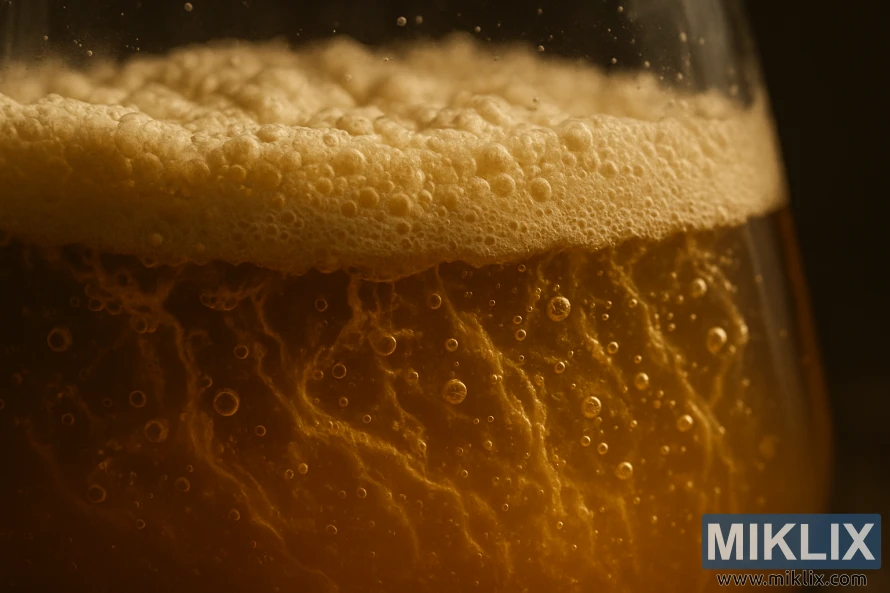
Comparison with Other Belgian Yeast Strains
Fermentis SafAle BE-256 yeast is a favorite among brewers, but how does it stack up against other Belgian yeast strains? To make an informed choice, brewers must grasp the differences and similarities between these strains.
A key comparison is with SafAle BE-134, another Fermentis yeast. Both are used for Belgian-style ales, yet they differ significantly. SafAle BE-256 is celebrated for its balanced fermentation and neutral taste. In contrast, SafAle BE-134 might introduce a unique ester profile.
Several factors influence the comparison of these yeast strains. Attenuation, flocculation, and alcohol tolerance are among them. For example, SafAle BE-256 boasts a high attenuation rate, ideal for dry finishes in beers. Other Belgian yeasts might have varying attenuation levels, impacting beer sweetness and body.
- Attenuation levels: Different yeast strains attenuate at varying rates, impacting the final beer's gravity and flavor.
- Flocculation characteristics: The ability of yeast to flocculate affects the clarity and stability of the beer.
- Alcohol tolerance: Yeast strains with higher alcohol tolerance are more suitable for brewing stronger beers.
By understanding these differences, brewers can choose the right yeast for their brewing goals. Whether aiming for a traditional Belgian ale or an experimental brew, the yeast choice is critical. It greatly influences the beer's flavor, aroma, and character.
For brewers eager to explore Belgian yeast strains, including Fermentis SafAle BE-256, it's vital to consider each strain's unique characteristics. This knowledge, combined with experience and experimentation, is key to achieving desired outcomes. It helps brewers craft high-quality, distinctive beers.
Commercial Success Stories
Fermentis SafAle BE-256 yeast has played a key role in creating many award-winning Belgian ales. It showcases its versatility and effectiveness in various brewing applications.
Breweries using Fermentis SafAle BE-256 have seen several benefits. These include:
- Consistent fermentation outcomes, leading to predictable flavor profiles and alcohol content.
- Enhanced attenuation, contributing to a drier finish typical of traditional Belgian ales.
- Robust flocculation properties, simplifying the brewing process and improving beer clarity.
Fermentis SafAle BE-256 yeast is suitable for a wide range of beer styles. It excels in complex, fruit-forward Belgian Tripels and crisp, refreshing Belgian Pale Ales. This yeast strain adapts well to different brewing conditions.
Some notable examples of commercial success with Fermentis SafAle BE-256 include:
- Breweries achieving higher attenuation rates, resulting in beers with more pronounced dry finishes.
- Improved consistency across batches, boosting brand reputation and customer satisfaction.
- Innovative brewers experimenting with new Belgian-inspired styles, leveraging the yeast's flexibility.
By examining these commercial success stories, brewers can gain valuable insights. They can see the yeast's applications and benefits in their own beer fermentation processes.
Pros and Cons Analysis
When evaluating Fermentis SafAle BE-256 for homebrewing, it's vital to consider both its benefits and drawbacks. This yeast strain is celebrated for its rapid fermentation and high isoamyl acetate production. These traits are key in crafting complex beer flavors.
Yet, it also has limitations. It's sensitive to temperature and wort concentration, which can affect its performance. Grasping these aspects is critical for brewers to make informed choices about the yeast's fit for their brewing objectives.
- Fast fermentation rates, allowing for quicker brew times
- High isoamyl acetate production, contributing to fruity and complex flavors
- Versatility in brewing applications, suitable for a range of Belgian-style beers
Conversely, there are some drawbacks:
- Sensitivity to temperature fluctuations, requiring precise temperature control
- Sensitivity to wort concentration, necessitating careful wort preparation
- Potential for variable flocculation characteristics, affecting beer clarity
By meticulously weighing these pros and cons, brewers can enhance their use of Fermentis SafAle BE-256 yeast. This ensures the desired outcomes in their beer brewing endeavors and homebrewing projects.
Conclusion
Brewing with Fermentis SafAle BE-256 yeast can greatly improve the quality of Belgian-style ales. Understanding its characteristics, such as optimal fermentation parameters and flavor profile, is key. This knowledge helps brewers optimize their fermentation process.
The technical details and performance of SafAle BE-256 yeast make it perfect for complex, balanced beers. Its high alcohol tolerance and flocculation characteristics ensure a clean fermentation. This results in a superior final product.
To achieve the desired beer characteristics, brewers must follow guidelines for starter preparation, storage, and viability. This approach unlocks the full benefits of Fermentis SafAle BE-256 yeast. It allows brewers to create exceptional beers that highlight its unique qualities.
Whether you're an experienced brewer or just starting, using SafAle BE-256 yeast can enhance your craft. Its proven track record and versatility make it a valuable tool for brewers. It's ideal for those focused on yeast for brewing.
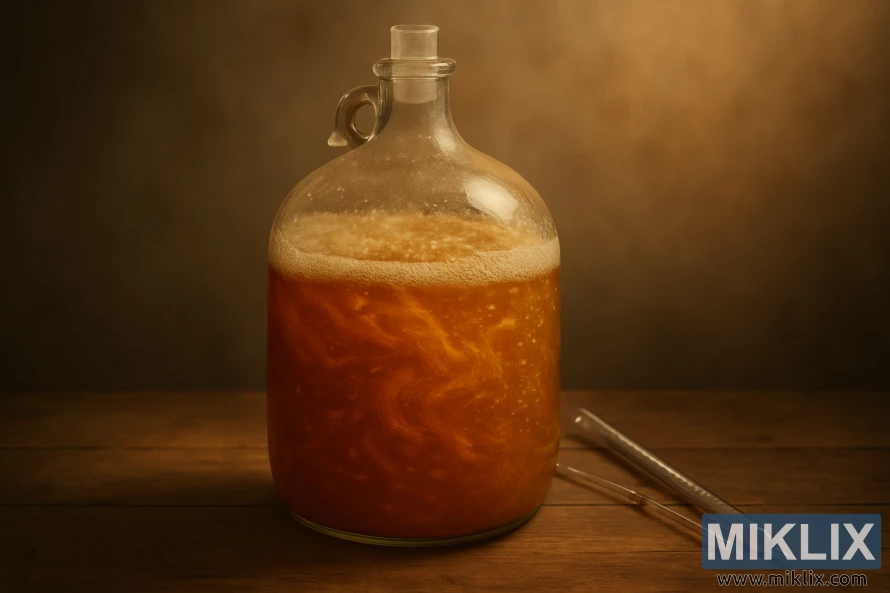
Further Reading
If you enjoyed this post, you may also like these suggestions:
- Fermenting Beer with White Labs WLP530 Abbey Ale Yeast
- Fermenting Beer with White Labs WLP550 Belgian Ale Yeast
- Fermenting Beer with Lallemand LalBrew Wit Yeast
